

North bound? No problem!
May biyahe na mula cubao patungong bataan, la union, pampanga at marami pang iba..
Bataan Transit Co., Inc. is a provincial bus company in the Philippines plying Central and North Luzon, particularly to the provinces of Bataan and La Union.

Hotline: 0998.595.2465
Padala na sa Norte!
Nueva vizcaya, isabela, quirino province, at cagayan province.
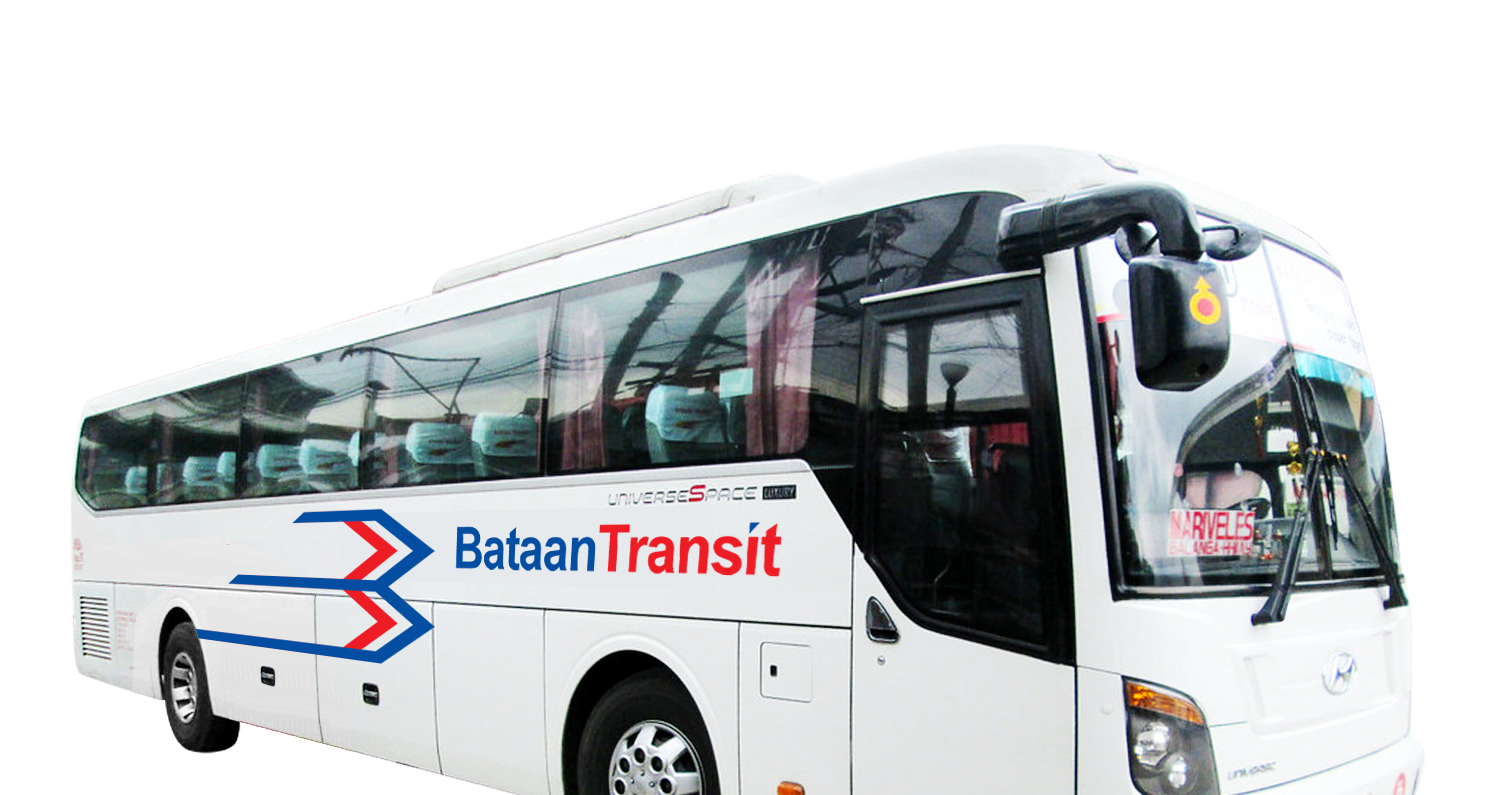
Testimonials
"good job bataan transit ,i proud to the company and your service to the people god bless all", "da best bataan transit suki ko yan pag lumuluwas ako papuntang cubao galing dto sa bataan..senior na rin ako...thanks sa inyong serbisyo", "super appreciated ko and service nila hung umuwi hung mother kong senior, sumasagot yung conductor every time na tatawag aka for follow up. god bless".

Bataan Transit Company Safety Protocols
Bataan Transit Company recognizes its duty to commitment to safety through our enhanced safety program. We comply with government guidelines on sanitation standards for transport vehicles. We practice safe and responsible travel with low-contact transactions and increased frequency of sanitation in all high touch points. Above all, we are committed to ensure the safety of our passengers and our employees.

Sign up to get latest updates and deals

Bataan Transit
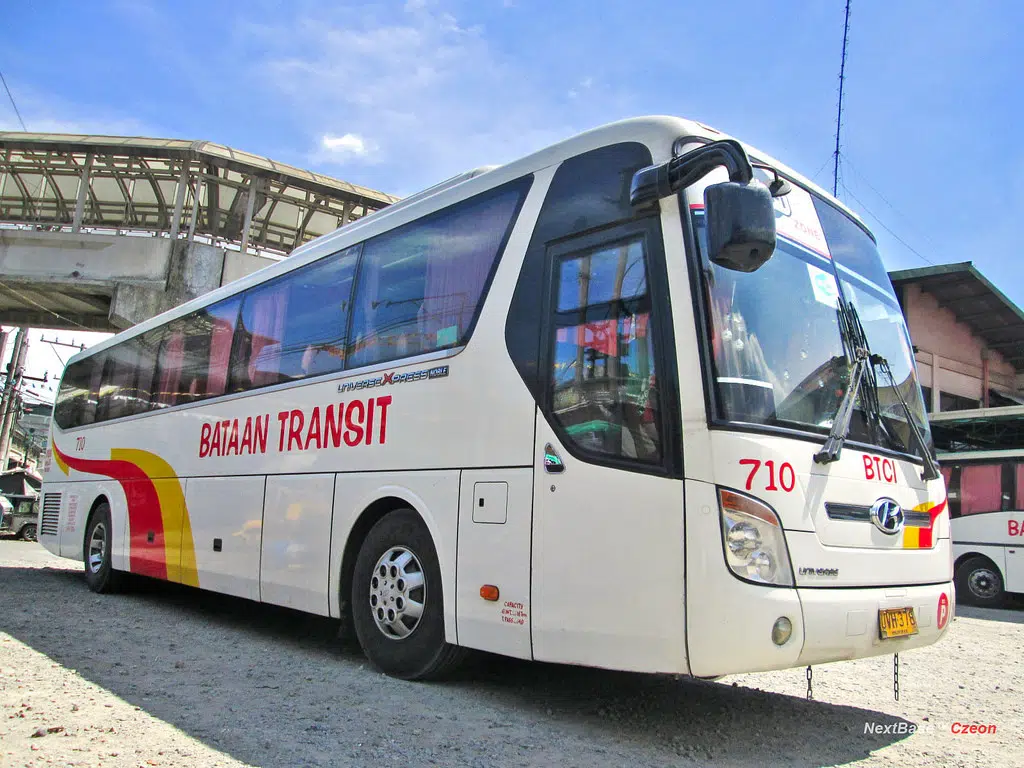
Popular routes with Bataan Transit
Bataan Bus Terminal B alanga
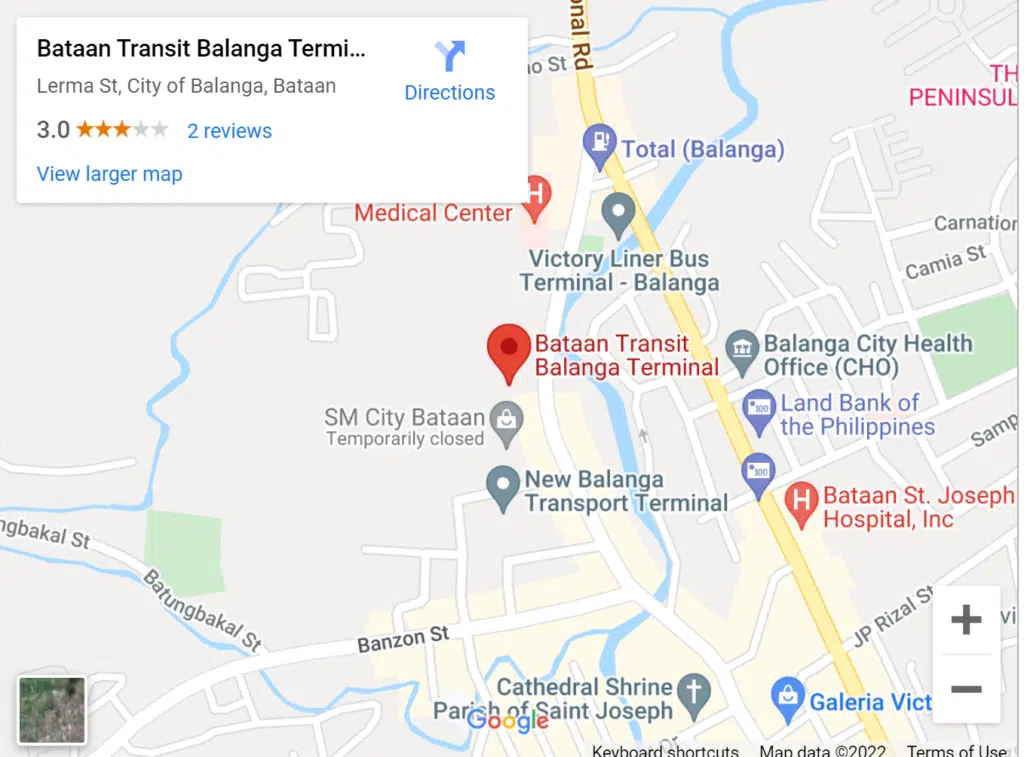
Bataan Bus Terminal Pampanga
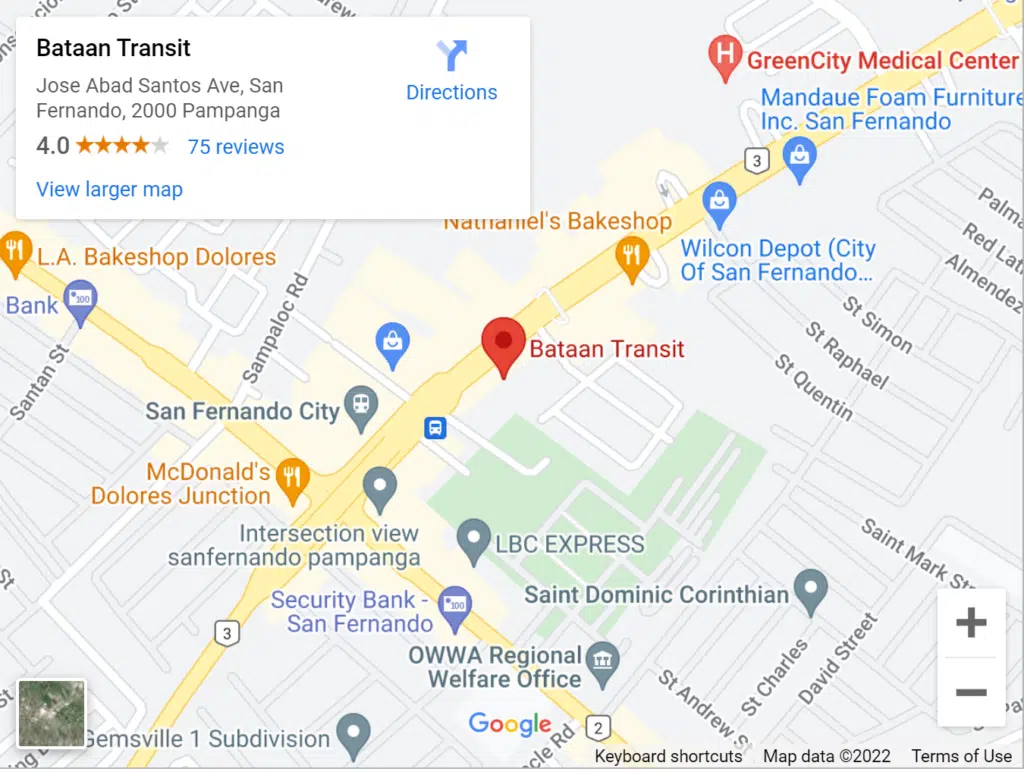
Bataan Transit Bus Destinations
Bus Pampanga – Manila
Bus Manila – Pampanga
Bus Bataan – Manila
Bus Manila – Bataan
Bus Manila – La Union
Bus La Union – Manila
How would you rate this company?
Click on a star to rate them!
Average rating 4.2 / 5. Vote count: 158
*Last updated: May 12, 2024

Bataan Transit
Bataan Transit is a bus company in the Philippines that mainly operates in Metro Manila and nearby provinces of Bataan and Pampanga. Photo credit to Bataan Transit FB page.
Bataan Transit Bus Schedule
- San Fernando to Balanga / Balanga to San Fernando
- Cubao to San Fernando / San Fernando to Cubao
- Mariveles to Balanga / Balanga to Mariveles
- Mariveles to San Fernando / San Fernando to Mariveles
Bataan Transit Contact Number
+63 998 595 2645
Share this:

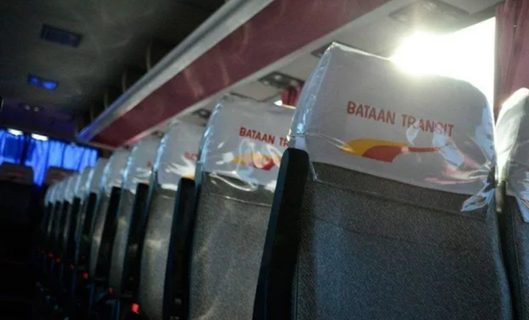
- Bataan Transit 🚌
- Bataan Transit
- Popular Routes
- Schedule and Timetable
About Bataan Transit
Bus is a convenient way of travel no matter whether you need to get to a neighboring town a couple of hours away or venture further afield crossing the whole country. Whatever your budget, buses have you covered. Express buses offer the most affordable ticket price for travellers who have very little money to spend. VIP options are geared toward those who do not want to compromise on comfort. Before you jump on a bus, make sure you choose the type of service which suits you best. For a long-haul trip look for a VIP or first-class coach which provides non-stop service to your destination or just call a minor number of stations along the way. Express or local buses in many cases may prove an acceptable choice for shorter trips, but longer rides are often not the best buy. Study the timetable before going as many long-haul destinations are served by night buses, and some offer wider seats or sleeper berths for such travels. Make an online reservation for your bus ticket with Bataan Transit. Other travellers’ reviews will help you to choose the best ticket and coach class.
Bataan Transit Popular Stations
The main stations covered by Bataan Transit’s buses include:
- Bataan Transit Incorporated Garage
- San Fernando
- Bataan Transit Balanga
- Mariveles Minibus Terminal
Bataan Transit Top Destinations
Bataan Transit buses ply a number of routes and here is the list of some of the most popular ones:
- Manila - Bataan
- Bataan - Manila
- Manila - Pampanga
- City of San Fernando - Manila
- Pampanga - Manila
- Cubao - Pampanga
- Pampanga - Cubao
- City of San Fernando - Cubao
Bataan Transit Ticket Prices & Bus Classes
One of the best things about bus travel is that you can almost tailor-make your trip adjusting it to your requirements for privacy and comfort. Different classes and types of buses cater to the different needs of travellers. The cheapest trips are normally offered by standard-class buses. They may be called local, express or ordinary. These are a good choice for shorter trips. Sleepers or VIP coaches are good both for longer and overnight trips. They may offer berths or wide soft reclining seats, sometimes with built-in massage options, blankets, soft drinks, and snacks, or more substantial meals on board or during toilet or refuelling stops. Travelling by night buses allows you to save on a hotel room, but to ensure the most comfortable ride do choose the class of your bus wisely. Prices always depend on the distance you ride and the type of coach. For some, even shorter trips, it is worth investing some extra money and buying a seat on a VIP bus as it can save you twice as much time as you spend travelling by an ordinary bus.
Travel by Bus: Pros & Cons
Pros of bus travel.
- Bus is the best choice to get to destinations that are not connected by rail or planes. The network of buses often covers almost the whole country, and their routes are well and long-established.
- Opposite to air travel and sometimes rail travel, taking a bus does not require arriving at the bus station much in advance. Check-in, even on international routes, does not take much time. Luggage allowances are usually very traveller-friendly, and the fee for extra luggage, if limits are set, is normally not very high.
- Bus tickets can be more affordable compared to air or fast train tickets. There is always a choice of ticket classes for all pockets. Cheaper standard options may be a bit slow and do not offer top comfort, but anyway acceptable and bring you to your destination. On longer routes, toilets or toilet stops as well as snacks, water, and sometimes toiletries and blankets are almost always included in the price.
- If you are ready to spend more, some VIP coaches offer seating comparable to business class on a plane with wide soft reclining seats, blankets, fewer passengers, and many other perks to make your trip a pleasant journey.
Cons of Bus Travel
- Newer intercity bus terminals are very often located out of the city close to bigger highways to allow buses to avoid city congestion. Unfortunately, it may create extra challenges for travellers, too. Getting to such a terminal may be a problem as in some destinations there are restrictions on vehicles allowed to enter the terminal, and you will have to use special carriers to get there. This results in higher costs as prices may be inflated. Also do calculate extra time if you are travelling during rush hours, especially if you are not familiar with the traffic situation at your starting point.
- Buses are probably the means of transport which runs out of schedule more often than trains or planes. They are heavily dependent on the road situation which sometimes can be unpredictable – accidents, road construction works, detours, etc. This is especially true for travels during weekends, high season, or national holidays. Do keep this in mind and do not plan tight connections.
- Travelling on certain routes or during the most popular periods may require advanced booking. Bear in mind that it is not always possible to show up at the bus station and hop on the next bus – tickets may well be all sold out, so organize your trip accordingly.

Bataan Transit Popular Routes
Bataan transit schedule & timetable, bataan transit stations.

Your travel portal in the Philippines
Bataan Transit was founded in May 15, 2003 as Nichaea Tours, Inc. Its fleet has since grown to 50 buses. They first started their operations to the City of Balanga, and then later expanded to Mariveles and San Fernando City, La Union. The bus company serves as a successor to Philippine Rabbit plying to Bataan as it stopped its route going to Manila vice versa.

Book Bataan Transit Bus tickets
BusTerminal.ph is a website that offers and facilitate online booking, ticket reservation and travel services in the Philippines. You book tickets from over 40 transport operators at any time of the day and compare prices. You can also filter your search results according to the cheapest, fastest, or most intelligent routes for your upcoming trip. Additionally, you can purchase Bataan Transit Bus tickets through BusTerminal.ph for your future tip.
Bataan Transit Bus Main Terminal
The main bus stations covered by Bataan Transit’s buses include:
- Bataan Transit
- San Fernando
- Mariveles Minibus Terminal
Bataan Transit Bus Routes
Bataan Transit buses ply a number of routes and here is the list of some of the most popular ones:
- Manila – Pampanga
- Pampanga – Manila
- City of San Fernando – Manila
Bataan Transit Bus Schedules
Manila – Bataan
00:00, 01:00, 02:00, 03:00, 04:00, 05:00, 06:00, 07:00, 08:00, 09:00, 10:00, 11:00, 12:00, 13:00, 14:00, 15:00, 16:00, 17:00, 18:00, 19:00, 20:00, 21:00
Find Tickets
Date Updated: March 27, 2023
Schedules and Fares
Genesis Manila to Bataan Bus: Fare, Schedule, Tickets, and Booking

- Online Booking
If you are planning to commute to Bataan from Manila, the most convenient and accessible option you have is to take the bus. Genesis Bus offers bus trips from Manila to Bataan and vice versa.
Bus Accommodation and Fare Rates
Travel time, genesis bus faq, about genesis transport, related trips, genesis transport destinations.
Use the search tool above or click here to book.
Bus Schedule
Genesis Manila to Bataan schedule has trips to Mariveles and Balanga daily. From Pasay, Manila to Mariveles Bataan , the first trip is at 1:00 AM , l ast trip at 7:30 PM , and with 20 minutes interval in between trips . From Pasay to Balanga , the first trip is at 4:00 AM, last trip at 9:00 PM , and with 20 minutes interval in between trips . From Avenida to Mariveles , the first trip is at 4:00 AM , last trip at 7:30 PM , and with an hour interval in between trips. From Avenida to Balanga , the first trip is at 3:00 AM , last trip at 10:00 PM , and with 15 minutes interval in between trips.
Genesis Bus Manila to Bataan fare varies depending on the terminal of origin and the destination. All buses are airconditioned buses. Fare rate ranges from PHP 200+ to PHP 315+.
Bust travel time from Manila to Bataan is approximately 3 hours and 20 minutes.
Hotels & Resorts
- DG Budget Hotel Salem
- Nichols Airport Hotel
- Kabayan Hotel Pasay
- Checa Mountview Hotel
- Phi-Phi Beach Resorts And Hotel
- Las Casas Filipinas De Acuzar
The cheapest way to travel the Manila-Bataan route is via bus. Fare rate ranges from PHP 200+ to PHP 350+, and travel time is approximately 3 hours and 20 minutes.
Travel time heading Bataan via bus is approximately 3 hours and 20 minutes.
Bus fare starts at PHP 200 to PHP 315.
For quick and convenient online booking of your bus ticket to Bataan, visit bustickets.ph .
Genesis bus has daily trips from Manila to Bataan. Buses to Mariveles have 20-minute to one hour intervals per trip and buses to Balanga have 15- to 20-minute intervals per trip. All buses to Bataan are airconditioned. Fare rates for buses to Balanga, Bataan ranges from PHP 200+ to 229+. Fare rate for buses to Mariveles is PHP 315+. Travel time from Manila to Bataan is approximately 3 hours and 20 minutes.
Genesis Transport Services Inc. provides airconditioned luxury bus transportation options that travel to key provinces and cities in Central and Northern Luzon. It has been on the road since 1991. Genesis Bus online booking is easily available at your fingertips.
Bataan Transit: Manila to Bataan Route
For the full list of bus routes by Genesis Transport, check out the Genesis Transport .
How would you rate this company?
Click on a star to rate them!
Average rating / 5. Vote count:

Bataan Transit - Tickets and online bookings
Bataan Transit is a provincial bus company in the Philippines covering routes in Central and North Luzon, particularly to the provinces of Bataan and La Union.
Official address : Belvedere Tower, San Miguel Avenue, San Antonio, Metro Manila

- 5.0 Based on 2 reviews
Bataan Transit’s popular routes

Manila to Balanga, Bataan
The distance between Manila and Balanga, Bataan is 36 miles, or approximately 57 kilometers. There are 1 ways to get from Manila to Balanga, Bataan, including bus. There are no morning departures for this route. The Earliest departure leaves at 19:00 and has a duration of 2 hours 50 minutes.
Manila to Balanga, Bataan by Bus
Bataan transit's most popular stations.
Choose a city
- Mariveles, Bataan
- San Fernando, Pampanga
- Balanga, Bataan
- Bataan Transit Bus Terminal Avenida Bataan Transit Bus Terminal Avenida, 933 Oroquieta Rd, Santa Cruz, Manila, 1003 Metro Manila, Philippines
- Mariveles Mini-Bus Terminal Mariveles Mini-Bus Terminal, Mariveles, 2105 Bataan, Philippines
- Bataan Transit Bataan Transit, 1109 Metro Manila, Philippines
- Bataan Transit Bataan Transit, Jose Abad Santos Avenue, San Fernando, 2000 Pampanga, Philippines
- Bataan Transit Company Incorporated Garage Bataan Transit Company Incorporated Garage, 17 Mirasol St, Cubao, Quezon City, 1100 Metro Manila, Philippines
- Bataan Transit Terminal Balanga Bataan Transit, MGMQ+66 City of Balanga, Bataan, Philippines
Stories by travelers, for travelers

Does anxiety stop you from traveling? Here are 5 tips to help you cope
When anxiety meets travel, it can be tough to find yourself out of the “sink or swim” state of mind. The challenge is real, but it can be beat. Here`s how.

Why do we travel? To search for solutions
Human sciences suggest that we are all trying to find purpose and freedom, even if we are too distracted to be aware of it. Travel does just that.
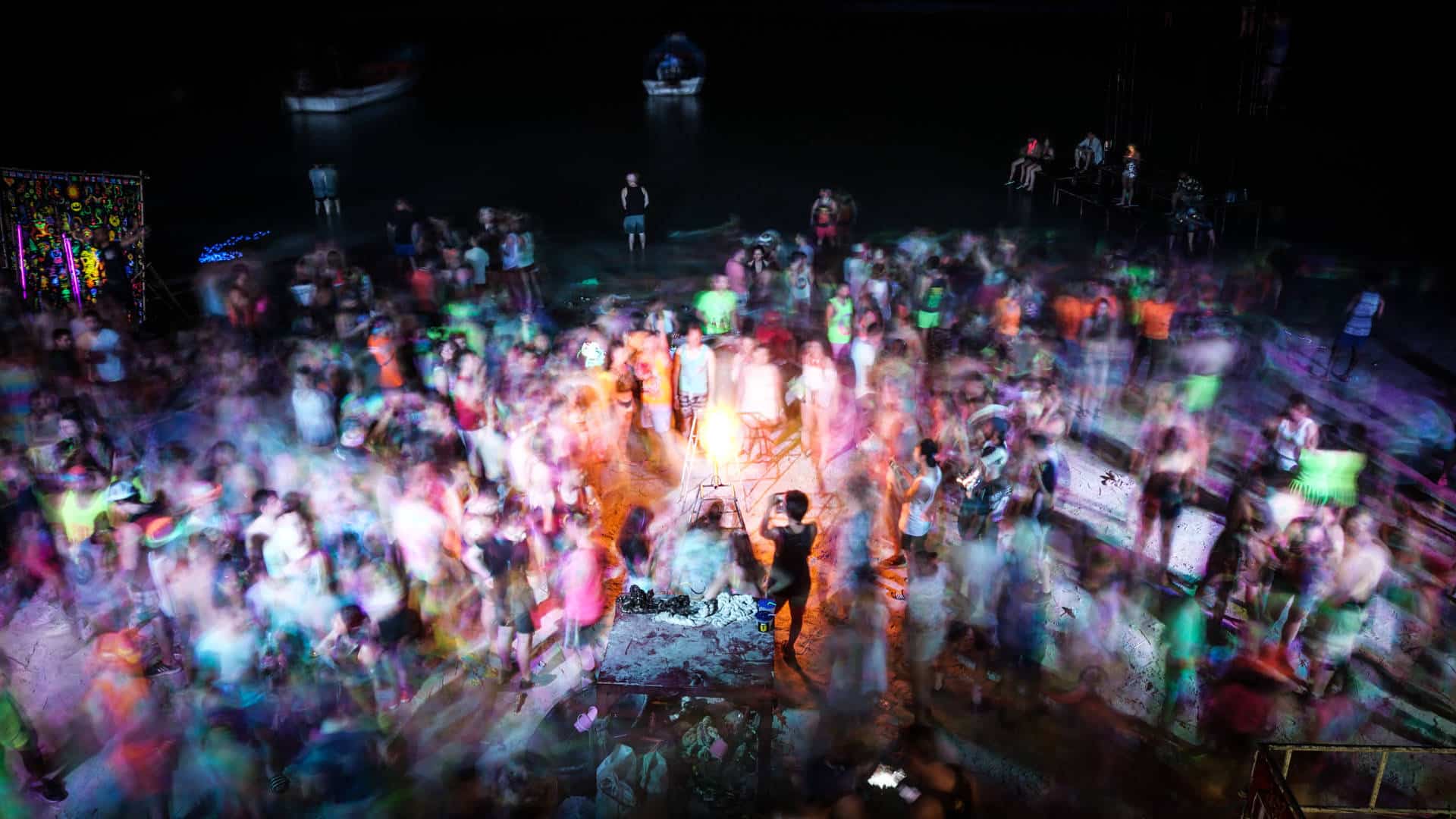
Travelers, keep the party going with these 7 tips
Party trips combine two types of fun, but also demand that you pay attention to certain things for maximum joy and minimum problems.
Your questions , Our answers
How much does a bus ride cost from manila to balanga, bataan.
The cost of a bus ride for a roundtrip adult ticket to Balanga, Bataan leaving from Manila is around $7.07
Do Bataan Transit have toilets on board?
Bataan Transit do not have toilets on board.
Is there Wi-Fi on Bataan Transit?
Bataan Transit does not have Wi-Fi on board their rides.
Do I need to print my ticket or does Bataan Transit offer e-tickets?
Bataan Transit has e-tickets so you don’t need to print your tickets.
Which cities does Bataan Transit operate in?
Bataan Transit operates in Manila, San Fernando, Pampanga, Balanga, Bataan, and Mariveles, Bataan
Where is the Bataan Transit office?
Bataan Transit’s office is located at Belvedere Tower, San Miguel Avenue, San Antonio, Metro Manila
We’re here for you
- Help center
Get to know us
- What our customers think
- Privacy policy
- Terms and conditions
Work with us
- Come work with us!
- Become a service provider
- Become our affiliate partner
Let's be friends
© Bookaway 2024
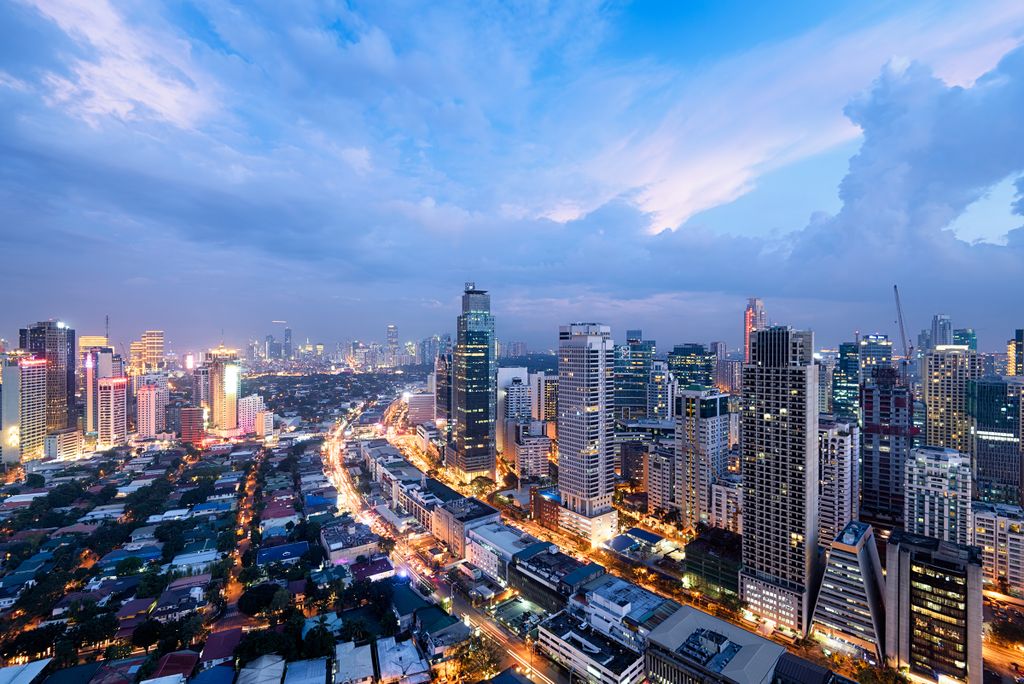

Manila to Bataan Transit
Best options, other options, transportation from manila to bataan transit.
- Trains are not available
- Buses are not available
- Ferries are not available
- Flights are not available
- Taxis are not available
- Vans are not available
Popular Routes
From manila.
- Manila → Cebu
- Manila → Baguio
- Manila → Boracay
- Manila → Palawan
- Manila → El Nido
- Cebu → Manila
- Davao → Manila
- Coron → Manila
- Baguio → Manila
- Bacolod → Manila
From Bataan Transit
- Bataan Transit → Baguio
- Bataan Transit → Manila
- Bataan Transit → Pasay
- Bataan Transit → Baguio City
- Bataan Transit → Cubao
To Bataan Transit
- Paranaque Integrated Terminal → Bataan Transit
- Cubao → Bataan Transit
- Cubao Genesis Terminal → Bataan Transit
- Pasay → Bataan Transit
- Pasay Tramo → Bataan Transit
Popular Routes in Philippines
- Cebu → Bohol
- Puerto Princesa → El Nido
- Oslob → Cebu
- Philippines 🎫
- Bataan Transit
- Transport Options
You are using an outdated browser. Please upgrade your browser .
Trans-Mongolian Trains
The following section displays the Trans Mongolian train routes and specific Trans-Mongolian trains as well as arrival and departure schedules. To receive Russian train schedules and Russian train ticket prices as well as to have the opportunity to order Russian train tickets online, please use our Russian train tickets page .
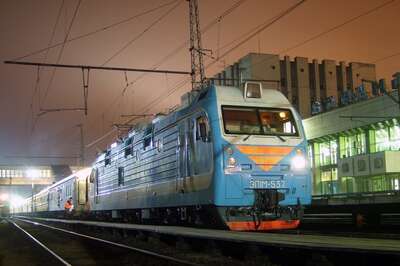
The Moscow to Beijing train 003/004 departs from Yaroslavsky train station in Moscow and arrives 5 days later at Beijing Central station. The train is operated by both Russian and Chinese staff. When the train crosses the border between Mongolia and China, the wheels of the train are changed to a smaller gauge - the whole process takes six hours. The train has 1st and 2nd class carriages and a nice restaurant car. NOTE: As the train crosses Mongolia on its route you may need to obtain a Mongolian transit visa to travel to China, please check the website of your local Mongolian Consulate.
- 004З Trip time: 130:50 hours 23:45 Moscow Yaroslavsky 14:35 Beijing
- 003З Trip time: 130:31 hours 07:27 Beijing 13:58 Moscow Yaroslavsky
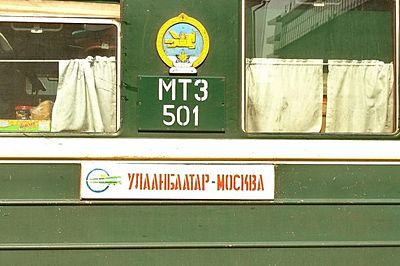
The train 005/006 is an international train operating between Moscow and Ulan-Bator along the Trans-Mongolian rail route. The train runs once a week during the high season and once every 2 weeks during the low season (winter). The train has 1st and 2nd class compartments and a restaurant car. The train runs along Lake Baikal during the daytime giving its passengers an opportunity to enjoy the beautiful landscape.
- 006З Trip time: 98:55 hours 23:55 Moscow Yaroslavsky 06:50 Ulan Bator
- 006Ч Trip time: 98:55 hours 23:55 Moscow Yaroslavsky 06:50 Ulan Bator
- 006Щ Trip time: 99:05 hours 23:45 Moscow Yaroslavsky 06:50 Ulan Bator
- 006Ь Trip time: 98:55 hours 23:55 Moscow Yaroslavsky 06:50 Ulan Bator
- 005В Trip time: 98:36 hours 15:22 Ulan Bator 13:58 Moscow Yaroslavsky
- 005Щ Trip time: 98:36 hours 15:22 Ulan Bator 13:58 Moscow Yaroslavsky
Frequently Asked Questions From Our Travelers
Can one travel by train from russia to mongolia.
Yes, three trains go directly from to Mongolia from Russia: Trains #305/306 Irkutsk - Ulan Bator, #003/004 Moscow - Ulan Bator - Beijing and #005/006 Moscow - Ulan Bator.
What currency is used on the Trans-Mongolian trains?
Russia’s currency, RUB, is used in Russia. MNT is used on the Mongolian side.
Do Russian trains accept credit cards?
It’s best to carry cash. Credit cards aren’t always taken.
Does the Moscow to Ulaanbaatar route have WiFi?
Unfortunately, WiFi is not available from Moscow to Ulaanbaatar.
Does the Moscow to Ulaanbaatar route have a restaurant car?
It does have a restaurant car. Meals range from $5-$20. Passengers can also carry food and drink with them.
Can I take shower on board a train from Moscow to Ulaanbaatar?
The passenger cars do not have showers. However, you may ask a conductor to use one in the staff’s carriage. Expect a small fee.
Our travel brands include

Express to Russia
Join us on Facebook
We invite you to become a fan of our company on Facebook and read Russian news and travel stories. To become a fan, click here .
Join our own Russian Travel, Culture and Literature Club on Facebook. The club was created to be a place for everyone with an interest in Russia to get to know each other and share experiences, stories, pictures and advice. To join our club, please follow this link .
We use cookies to improve your experience on our Website, and to facilitate providing you with services available through our Website. To opt out of non-essential cookies, please click here . By continuing to use our Website, you accept our use of cookies, the terms of our Privacy Policy and Terms of Service . I agree
Moscow Metro: The Complete Guide
The Moscow Metro is busy, but easy to use
Robert Schrader
With nearly 7 million riders per day on its 16 lines, the Moscow Metro is the sixth-busiest metro system in the world as of March 2019. Riding the Moscow Metro, however, does not need to be a stressful experience. In fact, it's by far the easiest and most enjoyable way to get around Moscow, especially since many Moscow Metro stations are veritable works of art. Our guide to the public transportation will teach you how to ride the Metro and more.
How to Ride the Moscow Metro
Here is some essential practical information you need to know to easily and seamlessly ride the Moscow Metro.
- Fares: Moscow Metro fares start at 55 rubles for a one-way ticket, which is good for five days after purchase. You'll pay more if your journey takes you outside of the central Moscow zones of A and B, though this is not the case for most tourists.
- How to Pay: Cash is the only way to buy a one-way ticket. However, if you have Apple Pay or Samsung Pay, you can tap your phone directly at the ticket gate and enter using NFC technology. You can also use both mobile payments and credit cards to top-up your reloadable Troika card.
- Routes and Hours: The Moscow Metro has 13 lines that snake and criss-cross the city, plus outer and inner loop lines that string them together, as well as a monorail. The Moscow Metro is open from approximately 5:30 a.m. to 1 a.m., and trains run with a frequency that can range between 1 and 7 minutes.
- Service Alerts: Download the official MosMetro app on the AppStore or Google Play .
- Transfers: Regardless of how you pay to enter the Moscow Metro, you can transfer to any of the core lines plus the Moscow Monorail without passing through an additional ticket gate. If you wish to transfer to bus lines, airport trains or other rail services, paying with Troika or your mobile device might be more convenient.
- Accessibility: Although Moscow Metro is impressive and modern in many ways, it is not very accessible . Visitors who use wheelchairs should try to avoid the subway and take aboveground transportation instead.
Beautiful Moscow Metro Stations
The Moscow Metro has achieved internet notoriety — and not just because of how busy it is. Several Moscow Metro stations are distractingly beautiful, including:
- Aviamotornaya: Brilliant gold themed to the flight of Icarus.
- Komsomolskaya: Bright yellow ceilings and murals chronicling Russia's journey to independence.
- Mayakovskaya: Art Deco, featuring mosaic ceilings and pink marble floor
- Park Pobedy: Modern station (built in 2003) with colorful murals; one of the deepest metro stations in the world (276 feet below ground!).
- Ploschad Revolutsii: Constructed in 1938 at the height of Soviet pride, this station is home to bronze statues that locals still rub for good luck.
Although it's technically legal to take pictures within the Moscow Metro, guards might approach you if you spend too long photographing a particular station, or use professional equipment like a tripod. Be as discreet as possible to avoid an uncomfortable confrontation!
Other Moscow Public Transit
In addition to the (mostly) subterranean transport offered by the Moscow Metro, Russia's capital is home to a number of aboveground transport options. This includes a large network of buses, as well as trams and "trolley buses." While these are all cheaper than the Moscow Metro, they also require some command of Russian to use; the ordinary buses are also subject to sitting in Moscow's terrible traffic.
In terms of payment, your Moscow Metro ticket isn't valid for transit to any other form of transit, though a Troika card will allow you to do so seamlessly. Likewise, while the various Aeroexpress trains (between Sheremetyevo Airport and Belorussky Station, Domodedovo Airport and Paveletsky Station and between Vnukovo Airport and Kievsky Station) feature modern vehicles and offer fast, reliable connections to Moscow's major airports, these lines are not considered to be part of the Moscow Metro system.
As noted earlier, the Moscow Metro is technically organized by "Zone," with the center of Moscow being occupied by the "A" and "B" zone. Again, you shouldn't worry too much about this. If you're hanging out in the parts of the city, you probably speak enough Russian to be able to ask a local for advice!
Taxis and Ride Sharing Apps
The bad news? It is exceedingly unlikely that a taxi drive in Moscow will speak English. The good news? Uber works in Moscow as of March 2019, which means that if you have the app installed on your smartphone (and a Russian SIM card, which you can pick up at Moscow Airport), your next Moscow ride is basically a matter of plug-and-play.
Russia also has a number of homegrown ride sharing apps, though these aren't as ubiquitous as Uber — they also don't have good English-language interfaces. If you're interested in learning more about them, in any case, be sure to visit the websites of InDriver or Taxi Maxim . Keep in mind that many of these applications require Russian credit cards, or a Russian bank account to pay for rides.
Security-wise, the technological aspect of using ride sharing apps in Russia makes them relatively safe. On the other hand, taxis have a dodgy reputation at best. If you do end up needing to take a taxi in Moscow, make sure to use a registered car. The ones waiting at the airport stands are generally legitimate; within the city limits, try and have your hotel call a taxi to be safe.
Renting a Car in Moscow
Traffic in Moscow is reliably awful, to say nothing of how difficult navigating the city's serpentine network of ring roads and one-way streets can be. However, if you do want to rent a car in Moscow (or in Russia, more generally) there are some facts you should keep in mind.
Documentation wise, it's not officially necessary to carry an International Driving Permit (IDP) — your US driver's license will work, at least if you plan to drive in Russia for less than six months. However, it might serve you well to get an IDP (you can apply at your local AAA office) for peace of mind. In Russia as in the US, you drive on the right side of the road; gas costs about 40 rubles per liter, or about $2.40 per gallon.
Another potential downfall of renting a car of Russia is the threat of interactions with Russian traffic police. While this doesn't put you in any mortal danger, there is a chance you'll have to bribe your way out of any confrontation, which outside the center of Moscow or other Russian cities will almost certainly necessitate some Russian language or body language skills.
Tips for Getting Around Moscow
Regardless of whether you take the Moscow Metro or any of the other transportation options listed here, these general tips for getting around Moscow will serve you well:
- Moscow's city center is very walkable. Unless you're visiting on a bitterly cold day during the middle of winter, many of Moscow's attractions are close enough together that you could walk. For example, you can easily walk from Red Square to Gorky Park, Bolshoy Theatre , Pushkin State Museum of Fine Arts , the Kremlin or simply along the Moskva River.
- All roads lead to Red Square. Although Moscow is not a grid-pattern city, it is relatively organized. The majority of major roads start and end at Red Square; the rest are circular ones that connect the "spokes" from Red Square. With this basic idea in mind, it's pretty difficult to get lost in Moscow!
- Moscow's awful traffic means that rail is usually the quickest option. Even if the physical distance between two places is shorter by car, traveling via the Moscow Metro is probably going to be quicker.
- English signage in Moscow has greatly improved over the years. On the other hand, familiarizing yourself with the Cyrillic alphabet before your trip to Russia probably wouldn't be a bad idea. If you need to push someone out of the way (spoiler alert: you probably will!), say izvineetye (sorry) to excuse yourself.
- Petty theft is common, especially during rush hour. Wear your backpack in front of your body, and don't keep large amounts of cash (or your smartphone!) in your back pocket. Hide any conspicuous signs of wealth to avoid being a target!
The Moscow Metro is easy to use—once you get the hang of it. After all, more than two billion trips take place across its rails every year. If it were difficult, this simply wouldn't be possible! Want to learn more about things to do in Moscow? Make sure to check out this guide to Red Square , which is both the geographical and cultural heart of Moscow (and arguably Russia).
Moscow - Russian Rivers and Waterways Port of Call
Getting Around Salt Lake City: Guide to Public Transportation
Getting Around Mexico City: Guide to Public Transportation
Getting Around Paris: Guide to Public Transportation
Getting Around Seattle: Guide to Public Transportation
Getting Around Beijing: Guide to Public Transportation
Getting Around Pittsburgh: Guide to Public Transportation
Getting Around Madrid: Guide to Public Transportation
A Guide to Moscow: Capital of Russia, City of Domes
How to Travel From LaGuardia Airport to Brooklyn by Subway, Bus, and Car
Getting Around Detroit: Guide to Public Transportation
Tokyo Metro: The Complete Guide
25 Best Things to Do in Moscow
Getting Around New Orleans: Guide to Public Transportation
Getting Around Frankfurt: Guide to Public Transportation
Cairo Guide: Planning Your Trip
Understand [ edit ]

A ride on the Trans-Siberian Railway is one of the few true adventures remaining.
The route from Moscow's Yaroslavsky Station to Vladivostok spans two continents, 16 major rivers, six federal states and almost a hundred cities. Even today the bridges across the Amur, Yenisei and Ob are unique – they are the largest river bridges on the Asian continent. In total there are 485 bridges. It is the backbone of the Russian rail network and the connection between the Asian and European railway networks. It's the most travelled railway in the world, and much of Russia's oil is transported along it.
While the population is largely ethnically Russian along the whole route, more and more of various Asian ethnic groups will be seen as you approach the Pacific coast.
The people you most likely will learn to know are your fellow passengers. Especially those who travel alone will very likely get to meet locals in the compartment. It's a fantastic opportunity to get to know Russians, especially if you know the language a bit. Remember that most people do not speak a word of English, so bring a Russian phrasebook . An automatic translator in a smartphone or tablet may become an indispensable tool for understanding the locals.
History [ edit ]

Travel in Siberia before the railway was a desperate affair. Early routes, trade and settlement were north-south, using the great rivers to sail in from the Arctic during the brief summer. Attempts were made to build an east-west highway from the 16th and 17th centuries, but early road-building was no match for the harsh climate and logistic problems. Meanwhile the great natural resources of Siberia remained untapped, and economically the east was looking to China not Russia, so the tsars then the Soviets persisted. But not until 2015 did Russia have a fully-paved, all-weather highway coast to coast. And even now that the highway is open, freight and people are moved via the railroad much more than via road – especially over the vast distances that are often necessary to get from anywhere to anywhere in Siberia.
A railway was a better prospect for shifting heavy freight, and construction of the Trans-sib railway began in May 1891 from both west and east. The first decade was a story of muddy heroism, with over 7000 km of railway built – no other railway has been built so fast. This despite all the hills, moors and swamps, despite the iron-hard frozen ground, impenetrable taiga and great rivers to be crossed, all with 19th century equipment and know-how – and in a country often viewed as hopelessly backwards by contemporaries. There were up to 60,000 workers building the railway and many lives were lost. The whole 9288 km railway was completed in 1916, with electrification completed in 2002. It changed the face of Russia, which now became an Asian as much as a European nation. Siberia and Far Eastern Russia saw an economic boom, and a massive migration to these regions – not always voluntary. Towns along the railway, such as Omsk, Novosibirsk, Krasnoyarsk, and Irkutsk, grew to large industrial cities. Equally, other places withered: Tomsk was intended to be on the Trans-sib but improved engineering allowed a shorter route via Novosibirsk, so instead it became a dumping-place for dissidents, a back-water, and its old town is better preserved as a result. To give just one example of the importance even contemporaries put on the railway, the French newspaper "La France" wrote upon completion: "After the discovery of America and the construction of the Suez canal, history knows no other event that had such massive direct and indirect consequences than the construction of the Trans-Siberian railway."
Trains to Mongolia and China were suspended during COVID-19 pandemic . These have since been resumed.
Prepare [ edit ]

Independently or with a tour group? [ edit ]
Travelling independently is straightforward provided you are well-organised, and can plan and book all your stop-overs, accommodation and journey legs in advance. You will need to do this in any case to get your Russian visa, if your itinerary involves multiple entries into Russia. Then, like a spacecraft coasting between planets, you will almost weightlessly progress from train to hotel to train to hotel. Try to improvise it as you go along and it will be adventure verging on quagmire. You may get away with winging it along the Moscow – Saint Petersburg axis and in the CIS countries. However, Trans-Siberian distances and journey times are vast, and finding accommodation and booking train tickets locally will require at least a basic knowledge of Russian.
If you travel on an organised tour , all these problems disappear. You simply need to pay and show up at the right time. A group trip on the Trans-Siberian is about 30% more expensive compared to a DIY trip. It also means that you are bound to the schedule of the group and that your interaction with locals will likely be limited to greeting the waiter in the dining car.
Climate and equipment [ edit ]

Keep the luggage as small as possible and avoid bringing any valuables. What you should pack depends on the time of the year; in the summer the temperature can rise to over 30°C in Siberia and China. In winter it will be under -30°C in much of Russia and Mongolia. In the spring or fall just a couple of T-shirts, a sweater and a light jacket should suffice. If needed, clothes can be purchased cheaply at markets along the road. In the train, your clothing should be comfortable (e.g. sports clothes) and flip-flops. It's also recommended to bring enough stuff to read.
Suggested packing list [ edit ]
Packing the following items is recommended for any lengthy journey on the Trans-Siberian railway:
- Pocket knife For slicing up bread and vegetables you can buy from the sellers at major stops
- Cutlery Instant noodles, or its Russian version – instant potatoes, become essential snacks for most travellers, since each carriage is equipped with boiling water from the Samovar, unfortunately they often come without the usual plastic fork or spoon.
- Mess tins or large stainless steel mug with cover. Useful for preparing noodles or tea, and brushing teeth.
- Perfumed wet tissues/baby wipes/wet wipes These little things can do wonders for your personal hygiene.
- Head lamp On these long journeys (through 8 time zones), it often turns out that Einstein indeed was right – time does become relative. So bring a headlamp for reading when others want to slumber.
- Flip-flops or other slip-on footwear, for your days on the train
- Deck of cards or other easily explained games are great for socializing with your fellow travellers, and making the long hours spent on the train immensely more enjoyable. Bring a deck of 5 Crowns for this is a favourite in Russia. If you are a chess player, by all means bring a little chess set – the game is very popular in Russia.
- Pictures of your home, country and family and a phrasebook with a conversation section can work surprisingly well, since you'll have nothing but time to overcome the language gap. Many Russians tend to be curious about foreigners once the initial suspicion dies down, since they don't normally meet many – even these days. Recommended: make a list of vocabulary and study it in the train!
- Electronic device charger and external battery – many trains are not equipped with electric sockets.
Jewellery is best left at home. If you're bringing a cell phone, tablet or laptop they should of course be kept out of sight as much as possible. One thing that you should bring along is a camera with enough storage space. In all larger cities there are Internet cafés where you can upload your pictures or burn them to a disc. Also bring additional batteries or chargers, as charging your gadgets on board will not be easy (although possible).
Get in [ edit ]

The three termini of the Trans-Siberian are Moscow , Beijing and Vladivostok . There's also a bi-monthly connection from Moscow to Pyongyang , but it is generally not possible for foreigners to use this.
European termini [ edit ]
Moscow can be reached by train from many European destinations. Fares from London (one-way) start at around GBP200 and German Railways is a useful resource. You are likely to need a transit visa for Belarus on this route, unless you travel through Ukraine, make a detour from Warsaw up to Riga (multiple buses, need a few days) or from Germany via Helsinki (by train or ferry, comparatively expensive). Coming in the northern way makes it possible to include a visit to Saint Petersburg – accessible by train, bus or ferry from Finland and Estonia.
Eurolines is an European coach company, with routes from many cities. Fares from London start from around GBP60.
Aeroflot is the principal airline operating into and out of Moscow, in addition almost all European (and some Asian and North American) flag carriers and some budget airlines fly to Moscow.
Which Moscow station? First and foremost, your train departs from the station stated on your ticket, so check! But normally, trains along the classic Trans-Siberian route via Kirov depart from Moscow Yaroslavskaya Station. But several trains to the Urals, Siberia, and the Far East depart from Moscow Kazanskaya Station; it's adjacent to Yaroslavskaya Station and to Leningradskaya Station in the NE of the city, and the Metro stop for all three terminals is Komsomolskaya. Some other eastbound trains (mostly, those to Nizhny Novgorod) depart from Moscow Kurskaya, 1 km further south, and the Metro stop is Kurskaya.
Saint Petersburg , the Russian capital at the time when the Transsib was built, can be reached by train from Finland and Baltic countries. From there, you can either go to Moscow or take the northern Trans-Siberian route, circumventing Moscow, via Vologda and Yekaterinburg , where you will likely need to change the train to go further to Vladivostok or Beijing .
There are direct plane connections to Moscow and St Petersburg from many European airports.
Asian termini [ edit ]
DBS Ferry runs throughout the year to Vladivostok from Sakaiminato , Japan via Donghae , South Korea . By air, Aeroflot serves Vladivostok, among others.
Beijing can be reached by train from as far as Lhasa (Tibet) daily service, or Ho Chi Minh City (Vietnam), twice weekly service, or Hong Kong , alternate dates. Beyond Vietnam the rail connection breaks and there are no train routes from Thailand, Myanmar or India – though bus is often an option. There are plenty of international flights to Beijing and reasonably many to other eastern termini. For instance Air Asia offers budget options into China, Siberian Airlines S7 [dead link] offer flight connections into Russia, while MIAT Mongolian Airlines operate to Ulaanbaatar from Beijing, Moscow, Seoul, and Hong Kong in season.
Visa information [ edit ]

More detailed visa information in the Russia , Mongolia and China articles
Most travellers will need visas for all three countries.
China and Mongolia are fairly straightforward. The best way to obtain a visa is through your own embassy or consulate or in Hong Kong . Visas for British citizens cost GBP30. However, Mongolian visas can easily be obtained from the Mongolian consulate in Irkutsk (Russia), and Chinese visas in Ulaanbaatar (For the moment it is not recommended to apply for Chinese visas in Mongolia, due to tightened regulations.) Citizens of the United States (90 days), Canada, Israel (30 days) and a couple of European and Asian countries can enter Mongolia visa free. To travel to China almost everyone needs a visa – the exceptions are citizens of Japan and a few small countries; see China#Visas .
Russia is more problematic. Invitations are generally required for issuing a visa. Practice shows you can get it from online services like Realrussia or VisaHQ . If you are buying your train tickets through a travel agency at home, they can almost certainly handle your visa application if they specialize in travels to Russia. A tourist visa gives you up to 30 days in the country. A business visa is a choice for people who want to spend up to 90 days, however, you might need to use travel agency in your country to arrange it.
Every foreign tourist has to get registration for stays in one place of more than 7 working days (9 days if weekend is included). Hotels provide it for free most of the time, some hostels will do it for an extra charge. Apparently any Russian can register you at his/her place by going to the post office and paying a small fee. If you stay in one place for less than 7 working days, you are not required to register. Train tickets and hotel receipts are a good proof that you did not overstay. In any case, it is strongly advised to keep tickets and receipts until you leave the country .
However, Russian transit visas issued in Beijing or Harbin last 10 days and require no invitation. This would be enough time to make the trip with no stops along the way and spend a couple of days in Moscow. The Beijing consulate is open from 09:00 to 11:00 but remember that many Chinese nationals are also trying to acquire visas with you, so show up early. The cost varies for each nationality, but Americans can expect to pay US$250 for same-day service or $150 for the five-day service. Upon arrival in Moscow you have four nights valid on your transit visa, which allows for one or two nights in Moscow, an overnight train and one or two nights in Saint Petersburg, but you must be across the border before midnight on the final day of your visa.
There are many ways to exit from Russia via Saint Petersburg, including buses and trains to Helsinki , Tallinn , Riga , Kyiv and various other places in Europe, but be wary that nearly all nationalities need a transit visa (or tourist visa) for Belarus (see here if unsure) so be sure to be prepared with a visa if your plans take you through Belarus.
A Russian transit visa cannot be extended under any circumstances. If you arrive from Beijing , you can register your visa after arriving in Moscow. If you have a 10-day Transit Visa and do not stay in one place (go to Saint Petersburg) you do not have to register your visa .
Citizens of Israel, South Korea, certain Latin American countries, the CIS member states and a handful of other countries do not need Russian visas.
Tickets online [ edit ]

Tickets can be purchased online. Most routes support "electronic registration" – boarding the train only requires your passport (or the identity document associated with the ticket). Nevertheless, it is advisable to have your tickets printed out to avoid any hassles. You can do this in any cash desk or in one of the special ticket machines, which are now installed on bigger train stations. Always print your ticket at least an hour before departure, because ticket machines are often jammed or out of paper, while cash desks are notorious for very long queues. Hand over your passport and order confirmation (or just the order number). The cashier will issue you a paper ticket for no additional fee. They can print all your tickets at the same time.
Buying tickets at the official Russian Railways website is quite difficult but a bit cheaper than at the stations because there will be no processing fee. You can also select the car and your seat/place, and explore all options. However, not all foreign credit cards are accepted. You can buy domestic tickets up to 45 to 60 days before departure, international tickets 60 days before departure. International tickets are usually more expensive than domestic ones, so it is advisable to make a stopover shortly before border crossing and travel with domestic tickets as far as possible.
Ticket offices in Russia [ edit ]
- Russian Railways , ☏ +7 495 266-8300 (International Ticket Office only in Russian) . Website sell tickets online (in English)
- Transsib Reisen , ☏ +7 90959 1010-1 . sell tickets at cost. They have been located in Saint Petersburg since 1991 and they speak English, German and French as well. Their website, however, is solely written in German but shows an integrated Google translator.
- RusTrains.com , ☏ +7-812-645-08-98 , [email protected] . Convenient online ticket office. Working in Moscow since 2014, have website in English, Spanish and other European languages as well. Provide efficient customer support ( updated Sep 2019 )
Station numbers [ edit ]
Station numbers are used internally in the Russian railway computer system, but they are usually printed on the tickets as well. Knowing them may help when making the reservation in smaller stations (you could bring this page and use it for pointing), or when buying the tickets abroad.
Go [ edit ]
It's not worth getting off at every stop. The places listed below (except the junctions and border crossings) are the most interesting ones.

The Trans-Siberian proper [ edit ]
The Trans-Siberian proper connects Moscow with Vladivostok.
Generally there are one or two trains a day in each direction, either a slower (approx. 7 days) or a faster (approx. 6 days) one. From Moscow train 62 leaves Jaroslavl station and arrives in Vladivostok almost 6 days and 3 hours later. The slightly slower train, number 002 arrives in Vladivostok almost 6 days 22 hours later.
In the other direction train 61 leaves Vladivostok and is in Moscow 6 days and 4 hours later. The slightly slower 001 takes 6 days and 19 hours to reach Moscow.
The time and route below are for the faster trains (062 and 061). Trains 001/002 ( Rossiya ) take a different route from Moscow and pass via Yaroslavl instead of Nizhny Novgorod but joins the former before Kirov .

Trans-Mongolian [ edit ]
The Trans-Mongolian connects Moscow and Beijing. It follows the same tracks as the Trans-Siberian for a little more than half the way, then forks off south through Mongolia and into China. All stations in this section are five hours ahead of Moscow time.
The Trans-Mongolian, train 43 (identified as train K4 in China), leaves Moscow each Tuesday at 23:45 and arrives in Beijing on Monday afternoon at 11:40. Westwards, train number 33 (identified as train K3 in China) leaves Beijing at 11:22 each Wednesday and is in Moscow the following Monday at 13:58. In addition, there are two weekly trains between Moscow and Ulaanbataar. Train 6 goes from Moscow each Wednesday and Thursday at 23:45 and arrive in Ulaanbaatar on Monday and Tuesday morning at 06:45. In the other direction, train 5 leaves Ulaanbataar every Tuesday and Friday at 15:25, arriving in Moscow at 13:58 five days later, on Saturday or Tuesday.
Lake Baikal to Beijing [ edit ]
To continue after a break at the Baikal might be difficult, especially in peak seasons – so plan your itinerary and buy your tickets beforehand.
If you are in Ulaanbataar, need to get to Beijing and don't have a ticket, you're better off not taking the direct train as prices are steep and trains are often sold out at the ticket booth. There are, however, unofficial ticket touts around that are happy to sell you a ticket at three to five times the official price – obviously a bad deal. Instead, take a local train to the border at Zamiin Uud (USD15), cross into China by minibus and take a bus to Beijing (USD40).

Trans-Manchurian [ edit ]
The Trans-Manchurian is also known as Vostok (east) and like the former it goes to Beijing. It follows the Trans-Siberian tracks for a little longer (about two thirds of its length) after which it turns south and continues into China without going through Mongolia.
The Trans-Manchurian, train 20 (identified as train K20 in China), leaves Moscow at 23:45 each Saturday and is in Beijing at 05:46 the following Saturday. Train 19 (identified as train K19 in China) departs Beijing at 23:00 at Saturday night and is in Moscow at 17:58 on Friday.

Sidetrips [ edit ]

There are some interesting destinations "off the track". Saint Petersburg is often visited before or after a Trans-Siberian journey. The capital of the Tatars, Kazan , is on the alternative track between Moscow and Yekaterinburg. Tobolsk , the old Siberian capital is a little over 200 km away from Tyumen. Tomsk , the most beautiful city of Siberia can be visited as a sidetrip from Novosibirsk or Krasnoyarsk. One highlight on the trip is Lake Baikal that can be visited from Irkutsk and Severobaikalsk; you will see the lake from the train but why not explore the region further? Those staying for a few days in the region often take a trip to the scenic island of Olkhon .
In Mongolia, the area around Ulan-Bator is worth visiting; for example the Terelj National Park or the Gobi desert further away. One of the main attractions of China, the Great Wall is not far from the railway.
One of the parallel tracks, used by the Trans-Siberian in Soviet times, dips into the north of Kazakhstan through the mining city of Petropavl before re-entering Russia and rejoining the standard route at Omsk . Western passport holders don't need a visa to visit Kazakhstan, the problem is that you exit Russia and can only re-enter with a double- or multi-entry Russian visa. It's not worth the extra trouble of arranging this just for a quick look at Petropavl, the point would be to go further south to the Kazakh capital Astana (formerly Nur-Sultan) and to Almaty . These both have trains to Urumqi in northwest China, which has super-fast trains to Xian and Beijing. But this isn't a Trans-sib sidetrip but a whole separate itinerary, described in the Moscow to Urumqi article.
Buy [ edit ]
Costs depend mainly on the level of quality you want. A trip in second class and staying at mid-range hotels together with a simpler meal and sightseeing or a show will cost you €100–120 per day. If you want your train trip and hotels to be first class and take guided trips it's easy to raise the daily costs up to €500. Self-catering, travel in third class and staying at hostels you can get the daily expenses down to as little as €20–30. China and Mongolia are somehow cheaper and more accessible for tourism than Russia. There aren't really any discounts. An international (or local) student card can get you a few discounts, but senior discounts are unheard of.
Many world currencies can be exchanged at good rates in any city. Bringing local currency isn't necessary, as the rates in local banks are much better. Save for China, don't exchange moneys at airports (or just as much you need to get into town). In Russia, rates at exchange booths are usually similar to those in the banks. Money exchange is not possible on the train. In China the exchange rates are fixed by the government and private banks often refuse to change Swiss francs so you need to go to the governmental bank to exchange them.
Credit cards can be used in hotels, better restaurants, travel agencies and major grocery stores. In Moscow and Beijing they are widely accepted. Visa cards are the ones most frequently accepted in ATMs.
Travellers cheques can be cashed only at a few places, but the rates are acceptable.
A typical tip in Russia is 5–10%. You are not required to pay the tip when you are not satisfied with the service. In Mongolia the bill is usually rounded up. Neither of these practices is common in China.
Eat [ edit ]
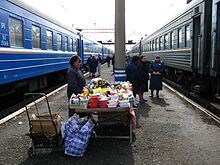
You will learn to know many different cuisines on a journey like this. For a more elaborate list of local specialities, please refer to particular cities' and regions' articles. Below are just a couple of general train-related things listed.
Many of the trains have dining cars . Prices are high for the quality you get. A main dish will cost €5–8. You may get freshly cooked food during lunch and dinner time, but on other occasions expect frozen food, which is warmed up in a microwave and becomes less than palatable. Drinks and alcohol are about 2–3 times more expensive than in the stores. On the other hand, you are not allowed to consume alcohol (save for beer) on board, and you are not allowed to bring your own alcohol to the dining cars, so if you want to drink, pay the price or do it quietly in your compartment, as most locals do. First-class tickets and even some of the 2nd-class tickets may include food (snacks for breakfast, warm food for lunch and dinner). A lady will come to your compartment and bring a couple of plastic bowls with warm food. It is usually freshly cooked and quite edible.
On the Moscow – Vladivostok route the train stops for 20–30 minutes every 3–4 hours. Everybody can get out of the train, and there are often people on the platform that offer a variety of fresh local food (eggs, fish, cheese, bread, fruits, meat or cheese in a cake) and often some drinks for passengers. Many railway stations nowadays require them to purchase a license to keep their stand at the platform. Between Beijing and Novosibirsk, platform vendors were observed only in Choir, Mongolia, and Mariinsky, Russia. Prices are low; only Russian rubles are accepted. A highlight is the smoked fish (Omul) being sold on the shore of Lake Baikal (Station: Slyudyanka, a quick stop, so be fast). Some of the larger stations will have food marts with snacks and alcohol.
Food and drinks are also sold in kiosks at the platforms, but normally twice as expensive. To get a reasonable price, wait for a station with a longer stop, and just exit the train station, usually there are plenty of kiosks or small shops just outside, offering a wider choice. Supermarkets (not necessarily of the western kind), affordable food stands and simpler restaurants can be found at most stops. More lavish restaurants and fast food chains can be found in major cities. However familiar western chains are to be found only in Moscow and Beijing.
Coming from Beijing through Harbin , the last stop in China is Manzhouli . The food being sold there is quite expensive, but many Russians stock up on provisions (i.e. spirits and beer). You can take a maximum of 2 litres of alcohol (either beer or vodka or any combination of those) per person into Russia or you will have to pay a "penalty" (bribe) to the customs. Get rid of all your Chinese Yuan here unless you want to take them as a souvenir as they become virtually worthless once abroad. There are a couple of black market money changers in front of the station that change renminbi to rubles at ripoff rates. To get rubles, you have plenty of time on the Russian side of the border ( Zhabaikalsk ). Walk to the ATM located at the bank in town. Allow 30 minutes to go and come back. The train stops for several hours while the carriages are being changed, so you can do some shopping at the local food markets (bread, cheese, etc.).
Coming from Beijing via Mongolia into Russia there are still the same rip-off exchange touts. There is a very reasonable foreign exchange office at Ulan Baator station, in the waiting area. Most if not all platform vendors in Mongolia and Russia take U.S. dollars or euros. However, they take only notes, so know the exchange rate and buy a lot if you are using a €5 note. Always ask the attendant how much time is available before you rush off into a station to find a Bankomat (ATM) because the train will not wait for you. If you are not spending time in Mongolia, avoid acquiring Mongolian tögrög. They are worthless virtually everywhere else, and the export of tögrög is illegal. Therefore, spend dollars or euro, but get rubles immediately because Russian vendors are more likely to fabricate exchange rates than Mongolian or Chinese platform vendors.
Food is traditionally placed on the table in the compartment. It is not uncommon to share food. This makes for a nice picnic where you learn to know your fellow passengers. It is polite to let them invite you and that you also have something to bring along. Why not bring something from your home country?
Every carriage has a samovar (hot water dispenser, lit. "self cooker") that is kept hot throughout the whole journey. Have a stack of dried soups, teabags and Nescafe ready. Just bring your own cup, or ask one from the train attendant. Train attendants also sell tea, coffee, snacks and even freeze-dried meals at slightly inflated prices.
Drink [ edit ]
Alcohol is an important part of Russian culture and thus it's not unusual to have some vodka at your compartment picnic. At this stage, you have to be careful and you need to know when to stop. First, drinking strong alcohol is not allowed in Russian trains, but, as always in Russia, "not allowed" does not mean "forbidden". Carriage attendants will pretend not to see you unless you are making a noise or other drama. Police may go through the train and harass people who are drinking, so stay quiet and keep bottles under the table. Never drink more than you can. A drinking competition will for sure land you in a hospital or worse. Use your common sense when fellow travellers offer you something. You are much more likely to taste a good drink than to get into trouble, but troubles are not unheard of and range from bad alcohol to alcohol intentionally mixed with drugs that will make you an easy victim.
Other than that, tea is also an important drink; in Russia this will mean black tea with lemon, in China green tea. It's drunk at breaks, after meals and sometimes as an aperitif.
The samovar also comes in handy when you'd like some hot drinks (the water is free but bring your own tea or buy some from the carriage attendant). It's usually possible to buy soft drinks and beer in the restaurant carriage to bring back to your carriage.
It's worth having a basic phrasebook as attendants are unlikely to speak English and the drinks provided won't come with milk or sugar unless you specifically ask for them.
Sleep [ edit ]

All tickets for long journey trains are for sleeping places. In the 1st and 2nd classes, they are about 1.9 m long and about half a metre wide. 3rd-class carriages have shorter berths. Some trains between Moscow and Saint Petersburg have seating places. Few trains in Russia have all 4 types of cabins to choose from:
- First class (SV) is, except the three 'M'-classes, the most comfortable and quite expensive. The price is at least twice as much as in 2nd class. Each cabin consists of two sofas flanking each side of the compartment, which convert into beds for sleeping. On some trains such as the Trans-Mongolian, the first-class compartments have private bathrooms. Service in first class actually somewhat resembles the service you would expect in Europe and North America, which is worth considering since Russian railways are notoriously bureaucratic and not very service-minded, to say the least. The compartment doors can be locked from within, but these locks can be opened from the outside with a key. If the security chain is used, the door can only be opened 5 cm.
- Second class (Kupe) somewhat compares to the standard on Western European sleeper trains. These carriages are compartmentalized, with each compartment holding 4 beds. You will share the two lower bunks during the day, and there is no other place to sit except for the dining car. Most trains will have male-only, female-only, and mixed compartments. You can choose any of the two depending on your preference. Kupe is a good compromise between relative comfort, and the ability to meet and mingle with the Russians. Prices are comparable to the cheapest economy-class plane ticket. 2nd-class tickets may be combined with food and "service". Food means hot food served twice a day. "Service" implies small things like toothbrush, sleepers, tea, coffee, and snacks included in the price of your ticket.
- Third class (Platzkart) bears some resemblance to the hard sleeper class on Chinese trains: many find this class to be much better than its reputation. These carriages are in an open layout with two lower and two upper berths (seat numbers 1–36), a narrow corridor, and another two berths that are stretched along the side of the carriage (seat numbers 37–52), the latter are not recommended. There is little in the way of privacy here, but many do prefer this option, at least for a short overnight trip, because you do not find yourself locked in a compartment with three strangers. It also gives a more uniquely Russian experience, and you will see a larger – and different – demographic than in second class. The price is usually 40–50 % lower than in the 2nd class. Lots of middle-class people travel this way, but you may also meet young men returning from the military service and other noisy or drunk companions, so it is a bit more adventurous than hiding oneself in a closed compartment. On the downside, 3rd class carriages have shorter berths that will be uncomfortable for anyone taller than 1.75 m. Lights are dimmed, but not completely switched off during the night.
- Fourth class (Obshchy) is the cheapest way of travel. It can be found on slower trains. Most people will only use it for short trips not exceeding 10–12 hr. 4th-class carriages may have individual seats, as in European trains, but you are more likely to find yourself in a 3rd-class carriage, where each lower berth accommodates three people, and additionally one person is supposed to lie on the upper berth. In fact, upper berths are most popular here. They are filled first, regardless of seat numbers written on the tickets. Then other people will sit or lie on the lower berths.
If the train arrives at your destination before 08:00 local time, the carriage attendant will wake you up half an hour before arrival. Otherwise you will be notified 15 minutes before arrival.
Talk [ edit ]

While Russia is a huge country and some regions have their own local language, Russian is taught in every school, and serves as the lingua franca between different ethnic groups. If you know some Russian, you can use it throughout the trip. If you don't, it's still worth learning the Cyrillic alphabet, since many signs do not have a transcription in Latin script.
Mongolian , the language of Mongolia, also uses the Cyrillic alphabet with two additional letters. However, Russian is the most widely studied foreign language in Mongolia, so you would generally be able to get by in the cities if you speak Russian. On the other hand, Mongolians have a strong sense of animosity against China and find it offensive to be addressed in Mandarin.
In northeastern China Mandarin Chinese is spoken. It's a tonal language and someone unfamiliar with Chinese reading Latin transcriptions that don't show tones is unlikely to be understood by locals. Likewise, most locals are also unable to understand Latin transcriptions of Chinese. In other words, if you cannot speak Chinese (well), have somebody, for example at your hotel, write down addresses in Chinese characters to show to taxi drivers, etc. Russian is generally not widely spoken beyond the border towns.
English is spoken mostly by youth and educated people. Outside Saint Petersburg and Moscow, the locals' English knowledge is not very good, and they usually speak with a strong accent. A few older Russians can speak German and some younger people can speak French. English is also not widely spoken in China, though staff at major hotels and tourist attractions that see many foreign visitors usually speak a basic level of English.
Stay safe [ edit ]

The journey on the Trans-Siberian route is quite safe, especially if you travel in groups of four and have your own compartment. Compartments can be locked from the inside with two locks. One can be opened from outside with a special key, the other cannot be opened from outside, and when locked allows the door to open a bit. It is advisable to use both locks during the night. The Trans-Mongolian and Manchurian train services once were hot spots of theft and gang robbery after the dissolution of Soviet Union, but as of Jan 2021 the routes are safe thanks to better law enforcement on board. You can't lock your compartment from outside when you go out. But the train attendant can do it for you.
3rd-class carriages provide less personal space and less protection. If you sleep on the lower berth, use the space under the berth to store your belongings. When on the upper berth, use the shelf above you. Take all valuable things with you when going out on to the station. Things are rarely stolen, but reasonable caution should be used.
Police in Russia can be your good friend or a bad enemy depending on the situation. Each train has at least one policeman who may shuffle around looking for drunks, drugs, beggars, and criminals. If you are harassed or threatened, contact the train attendant who will call the police. On the other hand, avoid doing something that can draw the attention of the police to you. After terrorist attacks in the early 2010s, each train station was assigned lots of police who tend to sporadically check documents and ask questions about your luggage. Never leave the train without your ticket and passport. Russian police are also very sensitive to people taking pictures of railways, stations, and trains. This is another aspect of anti-terrorist paranoia. Foreigners and especially Western tourists are less likely to face this problem. However, if you are approached by the police and asked to delete some photos, just do it and forget (or restore your photos later). Never try to take pictures of the police.
As a rule of thumb, smaller towns are less safe than bigger cities. If you are travelling alone, avoid areas void of people, near crowds the only thing to watch out for are pickpockets . If you are travelling shorter hops, it's possible that your train will arrive in the middle of the night. Stay inside the train station until the morning (unless you know well where to go), or choose a train that arrives in the daytime.
If you are an obvious tourist you are likely to get cheated at markets and especially by taxi drivers. The remedy for this is some knowledge of Russian and good bargaining skills. Always negotiate the price in rubles, even if the seller starts quoting the price in dollars and even if you plan to pay with dollars. Dollar prices are calculated according to the current bank exchange rates. Most places will not accept any currency other than rubles, though.
Often sellers and cab drivers will grab your arm to drag you to their stand or car. In this case it suffices to just rip yourself loose. They are there to make you pay high prices for their merchandise and services, not to hurt you.
There's prostitution going on in some hotels and even next to the train stations. To avoid possibly losing your money and health, steer clear. Same is true for drugs of any sort.
Likely the most dangerous city in the night time is Ulanbataar. Hotels and hostels often keep their doors shut between midnight and 06:00 because it's too unsafe on the streets.
Stay healthy [ edit ]
You should be in good physical condition while starting a trip like this, with no reason to believe your condition will worsen during the trip. Good medical care according to Western standards is really only available in Moscow and at private clinics in Beijing. In Mongolia you should really have a first aid kit . For smaller injuries, private clinics in Ulaanbaatar are good enough but if something serious happens you should get to Beijing, Europe or the United States regardless of the costs.
Health risks include avian influenza and rabies. Keep your distance from wild animals.
Tap water may not be safe for drinking. Russians consider it safe after boiling, and this is what you get from the samovar. If you are cautious, bring bottled water but remember that you won't have any opportunity to warm it.
Respect [ edit ]

Especially if you travel alone you will be spending some time on the train with locals, so it's useful to learn basic do's and don'ts before the journey. Please refer to the respect sections of the Russia , Mongolia and China articles to learn about the culture in the countries you will be traveling through.
Despite the opening of the countries for tourism, photography is still not allowed everywhere. Do not take photos of military and governmental buildings, as this can land you in jail in the worst case. You should also think twice before taking photos of other government-owned buildings like railway stations. Museums often have their own rules concerning photography, as elsewhere in the world.
Go next [ edit ]
If you have arrived in Vladivostok after a week on the train, you will feel like you have travelled to the end of the world, but as we know, the world isn't flat. Hence you will have the option to take the ferry to Japan or South Korea or the train to Harbin and from there to other destinations in China. It is theoretically possible, but practically very difficult to continue your journey to North Korea .
If your trip ends in Beijing , this is a great opportunity to explore other parts of China or even other parts of Asia. High-speed rail is the best way of getting around the country and for trips into North Korea, Beijing is a comparatively better starting point, though you will need to make sure you already have your North Korean visa before attempting this. If you have time, it's actually possible to get all the way to Papua New Guinea by a combination of trains, buses and ferries.
If your Trans-Siberian trip ends in Moscow , you can explore the Golden Ring , continue to St. Petersburg and all the way to the Nordic countries or take one of the several direct trains to European destinations. Notice that direct trains to Central Europe go through Belarus and practically everyone will need a visa (must be obtained in advance) to enter.
- Previous Featured travel topics
- Has custom banner
- Banner missing from Wikidata
- Articles with dead external links
- Has caution box
- Has caution box with no date
- Has map markers
- Has mapframe
- Maps with non-default alignment
- Maps with non-default size
- Maps with GPX indicator
- Guide itineraries
- Guide articles
- Intercontinental itineraries
- Itineraries
- Has Geo parameter
- Articles with no Wikidata coords
- Pages with maps
Navigation menu

4 ROUTE OPTIONS
Trans-siberian railway routes & railroad map.

TRANS-MONGOLIAN RAILWAY MAP ROUTE
The most popular trans-mongolian route trips:.
From Moscow to Beijing in epic style visiting the most popular stops as well as some rarely visited but equally worthy destinations including Kazan, Krasnoyarsk and Ulan Ude.
An excellent option for those wanting to explore the Trans-Siberian more extensively visiting the highlights of Irkutsk and Mongolia as well as Ekaterinburg in the Ural mountains.
Quite simply the ultimate Trans-Mongolian tour out there taking one month to travel from St Petersburg to Beijing with numerous stops and experiences along the way.
Discover the Trans-Mongolian route with this very popular tour including stops in St Petersburg, Ekaterinburg, Irkutsk and Mongolia.
ORIGINAL TRANS-SIBERIAN EXPRESS RAILWAY ROUTE
The most popular trans-siberian route trips:.
The ultimate exploration across Russia making all the worthwhile stops from Moscow to Vladivostok from the highlights to more off the beaten track destinations.
Cross from St Petersburg all the way to Vladivostok stopping off at the best stops as well as a superb side trip into Mongolia.
Discover more along the Trans-Siberian with this tour starting in Vladivostok and visiting Irkutsk, Lake Baikal and Ekaterinburg before reaching Moscow and finishing in St Petersburg.
The original Trans-Siberian route from Vladivostok to Moscow with a fantastic range and variety of stops along the way cover all the highlights.
THE BAIKAL AMUR MAINLINE - BAM
Our bam trips:.
Follow the Trans-Siberian and Baikal Amur Mainline Westbound from Vladivostok to Moscow passing and stop at remote Siberian settlements from Soviet times.
Follow the Baikal Amur Mainline BAM train route Eastbound with this trip combined with the Trans-Siberian from Moscow to Vladivostok for a real Russian rail adventure.
TRANS-MANCHURIAN RAILROAD ROUTE
Trans-manchurian trips featuring the harbin ice festival:.
Moscow to Beijing along a winter Trans-Manchurian route taking in Ekaterinburg, Lake baikal and the breathtaking Harbin Ice Festival.
A superb winter Trans-Siberian experience from Beijing to Moscow taking in the Harbin Ice Festival, lake baikal and winter activities in Ekaterinburg along the way.
CONTINUE TO EXPLORE THIS SECTION FROM THE OPTIONS BELOW
Map of the Trans-Siberian railway showing the major stops and popular places to visit as well as the Trans-Mongolian and Trans-Manchurian routes.
The Trans-Siberian Travel Company's selection of the best places to visit in Russia, Mongolia and China for your trip of a lifetime.
The best months of the year to take a Trans-Siberian rail tour - and when not to! Do you prefer the idea of a summer trip, a winter trip or fall colours of autumn?
A guide to the main trains used in our The Trans-Siberian Travel Company's tours, differences between first and second train classes and life on board.
The staff of The Trans-Siberian Travel Company came up with this list of the best experiences on offer though Russia, Mongolia and China.
From modern to soviet hotels, Mongolian Gers, Siberian Home Stays to traditional style Chinese courtyards, the right hotel selection can make your trip!
What currency to take on a Trans-Siberian tour - Russian Roubles? Mongolian Tugrik? Chinese Yuan RMB? US Dollars? Euros? Find the answers here.
Most nationalities will need a visa for their Trans-Siberian trip - find out more information about Russian, Mongolian and Chinese visas here.
Vaccination and inoculations needed or recommended for a Trans-Siberian trip visiting Russia, Mongolia and China. Updated for Covid-19.
Our guide to the most frequently asked questions when planning your rail tour and holiday along the Trans-Siberian routes.
Top Tips for a Trans-Siberian railway adventure based on experiences both good and bad from the trips we have done with specific lists for Mongolia and China.
The Trans-Siberian Travel Company's suggestions for a good read as you travel along the greatest railway in the world including reading lists for China, Russia and Mongolia.

Ukraine war latest: 'Astonishing' Putin reshuffle points to 'serious instability' in Russian leadership, ex-MI6 officer says
Russian defence minister Sergei Shoigu is set to be replaced more than two years into the war, in a major shakeup of Vladimir Putin's cabinet.
Sunday 12 May 2024 23:13, UK

- Russian defence minister and long-time Putin ally Sergei Shoigu to be replaced
- Ivor Bennett analysis: More going on here than meets the eye - and Shoigu's replacement speaks volumes
- Reshuffle points to 'serious instability' at heart of Russian leadership, ex-MI6 officer says
- More than 4,000 civilians have fled Kharkiv region after Friday morning's surprise attack by Putin's military
- Eyewitness: Deborah Haynes reports from town 'flattened' in offensive
- Analysis: Russia's attack in Kharkiv region not a complete surprise - but the force of it is
We're ending our live updates on the Ukraine war and Vladimir Putin's surprise reshuffle for this evening.
Scroll through the blog to read the latest updates from today.
As we've been reporting, Vladimir Putin has proposed a reshuffle which will see longstanding defence minister Sergei Shoigu replaced with civilian Andrei Belousov.
It's a name we haven't heard much through the war, but as defence minister he'll become a key figure.
So who is Andrei Belousov? Here's a quick explainer...
The 65-year-old graduated from the Faculty of Economics of the Moscow State University in 1981 with distinction.
He was appointed a non-staff adviser to the Russian prime minister in 2000 and joined the economy ministry in 2006. Between 2008 and 2012 he served as director of the economics and finance department under Vladimir Putin.
Mr Belousov was appointed economics minister in 2012, and then served as adviser to the Russian president from 2013 to 2020.
After this he was deputy prime minister - bar a brief period where he served as prime minister when Mikhail Mishustin contracted COVID in 2020.
Unlike previous defence ministers Mr Belousov does not have a military background. He's believed to be close to Mr Putin.
Sergei Shoigu being moved to Russia's Security Council signals that Vladimir Putin sees the institution as a political holding space, according to a Russian political analyst.
Tatiana Stanovaya, a senior fellow at the Carnegie Russia Eurasia Center, said in a piece online that the council was becoming a "reservoir for Putin's 'former' key figures - people who he can't let go, but doesn't have a place for".
In posts to X, Ms Stanovaya also said Andrei Belousov was a "logical choice" as Mr Putin looks to enhance arms production and meet military needs.
But she said despite the "surprising" reshuffles, which she claimed are not at an end, the Russian leadership's "overall policy and decision-making mechanisms will remain unchanged".
By Ivor Bennett , Moscow correspondent
This has come as a huge surprise. Not one, but two key figures in Russia's leadership structure sacked simultaneously.
It suggests there's a lot more going on inside the Kremlin than meets the eye.
Sergei Shoigu is a very close Putin ally and has been for years. So why replace him?
Clearly Putin is unhappy with the direction of the war. This coincides with Russia's attempt to open up a new front in the Kharkiv region of Ukraine. New directions and new leadership - Putin's ringing the changes.
Shoigu's successor speaks volumes. Andrei Belousov is an economist. A technocrat. Not an obvious choice to run the military, but this underlines where Putin's concerns are right now ("how much longer can I afford the war?").
Russia's entire economy is geared towards the military right now. He wants to ensure it's operating as efficiently as possible, so his war can continue.
Shoigu moves to the Security Council, where he'll replace Nikolai Patrushev. Technically it's a more important role, but in reality it’s a demotion. More importantly, by replacing Patrushev, it gives Putin more command over a powerful body within Russia's leadership structure. The Security Council was seen by some as a pseudo shadow cabinet. He'll now have an ally in post, albeit a disgruntled one.
Finally, to me, this speaks to Putin's confidence right now. The start of the new presidential term, he's clearly emboldened. But it also screams instability.
Kremlin spokesman Dmitry Peskov has told reporters this evening that announcing a new defence minister makes sense as Russia's military spending balloons.
He said Russia was heading towards a situation similar to that of the Soviet Union in the mid-1980s, when 7.4% of Russia's GDP went on the military and law enforcement.
Mr Peskov said this is why Vladimir Putin wanted to hand the position to a civilian with an economic background.
"The one who is more open to innovations is the one who will be victorious on the battlefield," he said.
Vladimir Putin has likely grown frustrated with Russia's overall lack of progress in the war despite its current momentum on the battlefield, a Russian foreign policy analyst has said.
Ivan Klyszcz, from the International Centre for Defence and Security, said the "entire Kremlin" is focused on winning the war and the reshuffle should be "read in that light".
He told Sky News the Kremlin has a tendency to replace senior officials some time after a failure or defeat, or after they haven't performed at a certain level.
"With Shoigu that's part of the story. It has to do with... some of the defeats that Russia has faced in the battlefront in 2022 and lack of progress in the war for them in 2023."
Mr Klyszcz says that Mr Shoigu has been in a "weak position" for some time.
UK defence minister Grant Shapps has reacted to the news of Vladimir Putin's cabinet shakeup.
In a post to X, Mr Shapps says Sergei Shoigu has "overseen over 355,000 casualties" among Russian soldiers and caused mass suffering in Ukraine.
"Russia needs a Defence Minister who would undo that disastrous legacy & end the invasion - but all they’ll get is another of Putin’s puppets," he said.
This is not just a normal reshuffle but "serious instability right in the heart" of Russia's regime, a former MI6 intelligence officer has said.
Speaking to Sky News, Christopher Steele said Nikolai Patrushev being removed from his role as secretary of the Russian Security Council is "astonishing".
"It's important to understand that he's been one of Putin's closest allies, former head of the FSB and so on for many years... and was rated by people to be probably the second most powerful man in Russia after Putin himself.
"I think what this indicates is not just a reshuffle along normal governmental lines. It's really quite serious instability right in the heart of this regime," he said.
Mr Steele says it has been "clear" to Russia watchers for some time that Mr Patrushev was lining up his son Dmitri, the current agriculture minister, to be Mr Putin's successor.
"I think that this is, as I say, a very significant move by Putin," he added.
'Something much deeper' going on
Asked why Mr Putin would remove Mr Shoigu as defence minister at a time when Russia appears to have the upper hand in the war, Mr Steele says it could point to something "much deeper" happening.
"It's hardly ideal from a military point of view to replace your defence minister right at the time when you're launching a new offensive," he explained.
"This underlines to me that there is something much deeper going on here."
Mr Steele also characterised Mr Shoigu's switch to the Security Council as a "demotion" - but reiterated that Mr Patrushev, a member of the Russian president's inner circle, being moved to an unknown position was "extraordinary".
Sergei Shoigu's removal has "first and foremast come as a surprise", says our Moscow correspondent Ivor Bennett .
Mr Shoigu has been part of the cabinet, and Vladimir Putin's cohort, for a "very long time", he says.
Bennett says his position came under threat last year as the late Wagner Group leader Yevgeny Prigozhin launched a short-lived mutiny against the Kremlin.
"But when he was seen off, when that coup was seen off, Prigozhin died.... Sergei Shoigu's position seemed a lot stronger, actually," he says.
"He emerged from that crisis stronger, as did Vladimir Putin."
Bennett explains that Mr Putin has, by law, to dissolve his government as he starts his new presidential term.
"We were expecting a new cabinet, but I don't think we were expecting such a big change at the top.
"I think that reflects a few different things. First and foremost, I think Vladimir Putin... feels like he needs to do something new, certainly symbolically within the the war context," Bennett says.
Analysts say Vladimir Putin is looking to project an image of stability and satisfaction with his team's progress, with Mikhail Mishustin remaining in post as prime minister on Friday.
As he continues to confirm his top team, Mr Putin has also proposed Sergei Lavrov remain as foreign minister.
Valery Gerasimov, the chief of Russia's general staff, will remain in his position as well.
Be the first to get Breaking News
Install the Sky News app for free


IMAGES
VIDEO
COMMENTS
TRIP SCHEDULE. San Isidro - Caloocan | Balanga - Cubao | Mariveles - Avenida | Mariveles - La Union | La Union - Avenida ... TOP DESTINATIONS. Bataan. Visit the thriving province of Bataan and discover historical and exceptional locations. Dig deeper into a destination with life-enhancing retreats, adventures, and ecotourism journeys ...
About Us. Bataan Transit Co., Inc. is a provincial bus company in the Philippines plying Central and North Luzon, particularly to the provinces of Bataan and La Union. Hotline: 0998.595.2465.
Bataan Transit is under the Five Star Bus group of companies. Originally, Bataan Transit started out in 2003 with the name Nichaea Tours, Inc. They have since changed their name and have grown their fleet to 50 bus units. As you can tell from its name, they specialize in routes going to Bataan and nearby provinces.
Summary. Bataan Transit offers daily trips from Manila to Bataan. There are three trips daily to Balanga at 11:00 PM, 1:00 AM, and 3:00 AM. Fare rate to Balanga is PHP 250. There are three trips daily to Marivele s at 10:00 PM, 12:00 MN, and 2:00 AM. Fare rate to Mariveles is PHP 300. Travel time is approximately 3 hours and 20 minutes.
Bataan Transit is a bus company in the Philippines that mainly operates in Metro Manila and nearby provinces of Bataan and Pampanga. Photo credit to Bataan Transit FB page. Bataan Transit Bus Schedule. San Fernando to Balanga / Balanga to San Fernando; Cubao to San Fernando / San Fernando to Cubao; Mariveles to Balanga / Balanga to Mariveles
Bataan Transit Ticket Prices & Bus Classes. One of the best things about bus travel is that you can almost tailor-make your trip adjusting it to your requirements for privacy and comfort. Different classes and types of buses cater to the different needs of travellers. The cheapest trips are normally offered by standard-class buses.
Bataan Transit Bus Co., Quezon City, Philippines. 78,052 likes · 66 talking about this · 891 were here. This is the OFFICIAL page of Bataan Transit Bus Co. Inc. Follow us for the latest updates on travel. Bataan Transit Bus Co., Quezon City, Philippines. 78,052 likes · 66 talking about this · 891 were here. ...
Bataan Transit Stations. Bataan Transit Incorporated Garage Avenida San Fernando Bataan Transit Balanga Mariveles Minibus Terminal Bataan Transit. 🚌 Book Bataan Transit bus tickets hassle-free with 12Go! Browse schedules, prices, and reviews online to plan your perfect trip. Try 12Go today!
Bataan Transit Bus Terminal. Avenida, Balanga, Cubao, Dau, Mariveles Bataan, San Fernando La Union, San Fernando Pampanga. Related: Avenida Terminal; Cubao / Kamias Terminal; ... Ang schedule ng LRT 1 mula sa EDSA Taft / Baclaran papuntang Balintawak Station ay mula 4:30 AM (first trip) hanggang 10:00 PM mula Lunes hanggang Biyernes at 4:30 AM ...
Book Bataan Transit Bus tickets. BusTerminal.ph is a website that offers and facilitate online booking, ticket reservation and travel services in the Philippines.You book tickets from over 40 transport operators at any time of the day and compare prices. You can also filter your search results according to the cheapest, fastest, or most intelligent routes for your upcoming trip.
Summary. Genesis bus has daily trips from Manila to Bataan. Buses to Mariveles have 20-minute to one hour intervals per trip and buses to Balanga have 15- to 20-minute intervals per trip. All buses to Bataan are airconditioned. Fare rates for buses to Balanga, Bataan ranges from PHP 200+ to 229+. Fare rate for buses to Mariveles is PHP 315+.
Bataan Transit - Tickets and online bookings. Bataan Transit is a provincial bus company in the Philippines covering routes in Central and North Luzon, particularly to the provinces of Bataan and La Union. Official address: Belvedere Tower, San Miguel Avenue, San Antonio, Metro Manila. 4 Cities.
Bataan Transit was founded on May 15, 2003, as Nichaea Tours, Inc. Its fleet has since grown to 50 buses. They first started their operations in City of Balanga, and then later expanded to Mariveles and San Fernando, La Union. The bus company serves as a successor to Philippine Rabbit plying to Bataan as it stopped its route going to the said ...
Daily Trip Schedule: Cubao - Balanga Tumungo sa aming terminal para sumakay! Balanga Terminal Lerma St., Brgy. Ibayo, Balanga, Bataan Sa harap ng common terminal
Looking how to get from Manila to Bataan Transit? Check trip schedule and travel distance. Compare prices for 🚆 trains, 🚌 buses, 🚢 ferries and ️ flights. Book tickets now on 12Go! 12Go. Support; Cart ; English ; Manila to Bataan Transit. Manila. Bataan Transit. Sun, May 5 One Way. NaN Passengers. Update. Thu, May 2. Fri, May 3.
The train 005/006 is an international train operating between Moscow and Ulan-Bator along the Trans-Mongolian rail route. The train runs once a week during the high season and once every 2 weeks during the low season (winter). The train has 1st and 2nd class compartments and a restaurant car. The train runs along Lake Baikal during the daytime ...
Routes and Hours: The Moscow Metro has 13 lines that snake and criss-cross the city, plus outer and inner loop lines that string them together, as well as a monorail. The Moscow Metro is open from approximately 5:30 a.m. to 1 a.m., and trains run with a frequency that can range between 1 and 7 minutes. Service Alerts: Download the official ...
The Rossiya train, which plies the entire Trans-Siberian railway from Moscow to Vladivostok. The Trans-Siberian Railway (Russian: Транссиби́рская магистраль Transsibírskaya magistral' or Трансси́б Transsíb) is the name given to the rail routes that traverse Siberia from Moscow. Routes not trains, note; there's no such thing as the "Trans-Siberian Express".
TRANS-MONGOLIAN RAILWAY MAP ROUTE Note: The section of the trip from Ulaanbaatar to Beijing and vice versa has no train in operation at the moment - it has yet to reopen since Covid.There are daily flights though to link Mongolia and China. The shortest of the 3 rail routes on our Trans Siberian railroad map is the Trans-Mongolian at 7,621 km (4,735 miles) and runs from Moscow to Beijing.
Russian defence minister Sergei Shoigu is set to be replaced more than two years into the war, in a major shakeup of Vladimir Putin's cabinet.